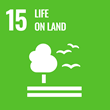Project information
Centrum pro evropské vegetační syntézy (CEVS)
(CEVS)
- Project Identification
- GX19-28491X
- Project Period
- 1/2019 - 12/2023
- Investor / Pogramme / Project type
-
Czech Science Foundation
- EXPRO
- MU Faculty or unit
-
Faculty of Science
- prof. RNDr. Milan Chytrý, Ph.D.
- Mgr. Irena Axmanová, Ph.D.
- Ing. Jiří Danihelka, Ph.D.
- RNDr. Jan Divíšek, Ph.D.
- prof. Mgr. Michal Hájek, Ph.D.
- Mgr. Anni Kanerva Jašková
- Mgr. Veronika Kalusová, Ph.D.
- Mgr. Ilona Knollová, Ph.D.
- Flavia Landucci, Ph.D.
- doc. RNDr. Zdeňka Lososová, Ph.D.
- Mgr. Pavel Novák, Ph.D.
- Mgr. Tomáš Peterka, Ph.D.
- doc. RNDr. Jakub Těšitel, Ph.D.
- doc. Mgr. Lubomír Tichý, Ph.D.
- Mgr. Martin Večeřa, Ph.D.
- Mgr. Dominik Zukal
Kontinentální syntézy diverzity vegetace a biotopů v jemném rozlišení jsou nové výzkumné
téma, které se otevřelo poté, co náš tým vytvořil základ evropské datové infrastruktury v podobě
Evropského vegetačního archivu (EVA), tedy integrované databáze 1,5 milionu
fytocenologických snímků. O tyto syntetické studie je velký zájem nejen v oblasti základního
makroekologického a biogeografického výzkumu, ale i v praxi, kde slouží k mezinárodnímu
politickému rozhodování a plánování ochrany přírody. Cílem projektu je vytvořit evropské
centrum pro vegetační syntézy s rozsáhlou sítí mezinárodních spolupracovníků. Toto centrum
bude (1) dále rozvíjet výzkumnou infrastrukturu v podobě specializovaného analytického
software, postupů analýzy dat a databází fytocenologických snímků, vegetačních typů a druhů;
(2) provádět syntetické evropské studie typologie biotopů a vegetace, jejich diverzity na úrovni
druhové, fylogenické a funkční a jejich invadovanosti nepůvodními druhy; (3) zpřístupňovat
získané výsledky odborné i laické veřejnosti na webovém portálu.
Sustainable Development Goals
Masaryk University is committed to the UN Sustainable Development Goals, which aim to improve the conditions and quality of life on our planet by 2030.
Publications
Total number of publications: 137
2023
-
Subalpine vegetation changes in the Eastern Sudetes (1973-2021): Effects of abandonment, conservation management and avalanches
Applied Vegetation Science, year: 2023, volume: 26, edition: 1, DOI
-
The relationship between spectral and plant diversity: Disentangling the influence of metrics and habitat types at the landscape scale
REMOTE SENSING OF ENVIRONMENT, year: 2023, volume: 293, edition: August, DOI
-
Trait hypervolumes based on natural history collections can detect ecological strategies that are distinct to biogeographic regions
Journal of Ecology, year: 2023, volume: 111, edition: 2, DOI
-
Traits of dominant plant species drive normalized difference vegetation index in grasslands globally
Global Ecology and Biogeography, year: 2023, volume: 32, edition: 5, DOI
-
Transcaucasian Vegetation Database - a phytosociological database of the Southern Caucasus
Vegetation Classification and Survey, year: 2023, volume: 4, edition: October, DOI
-
Transformation of West-Carpathian primeval woodlands into high-altitude grasslands from as early as the Bronze Age
Vegetation History and Archaeobotany, year: 2023, volume: 32, edition: 2, DOI
2022
-
Alien plants tend to occur in species-poor communities
NEOBIOTA, year: 2022, volume: 73, edition: May, DOI
-
Calcicolous rock-outcrop lime forests in the Cantabrian Mountains and the Western Pyrenees
Tuexenia, year: 2022, volume: 42, edition: 2022, DOI
-
Catalogue of alien plants of the Czech Republic (3rd edition): species richness, status, distributions, habitats, regional invasion levels, introduction pathways and impacts
Preslia, year: 2022, volume: 94, edition: 4, DOI
-
Central European forest-steppe: An ecosystem shaped by climate, topography and disturbances
Journal of Biogeography, year: 2022, volume: 49, edition: 6, DOI
